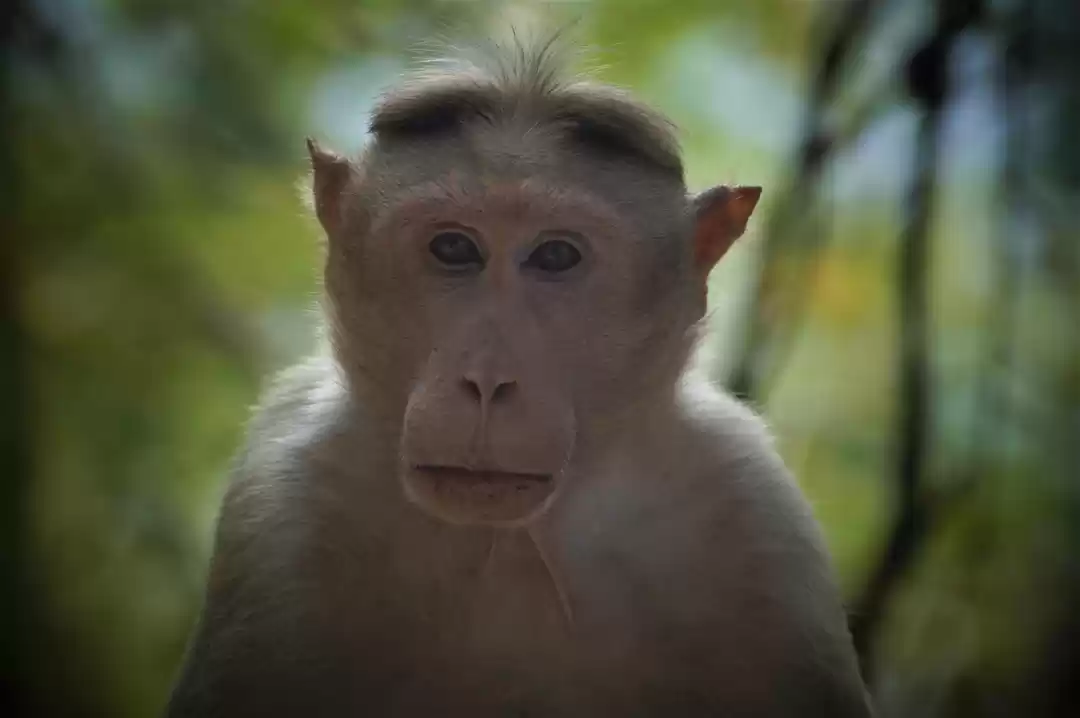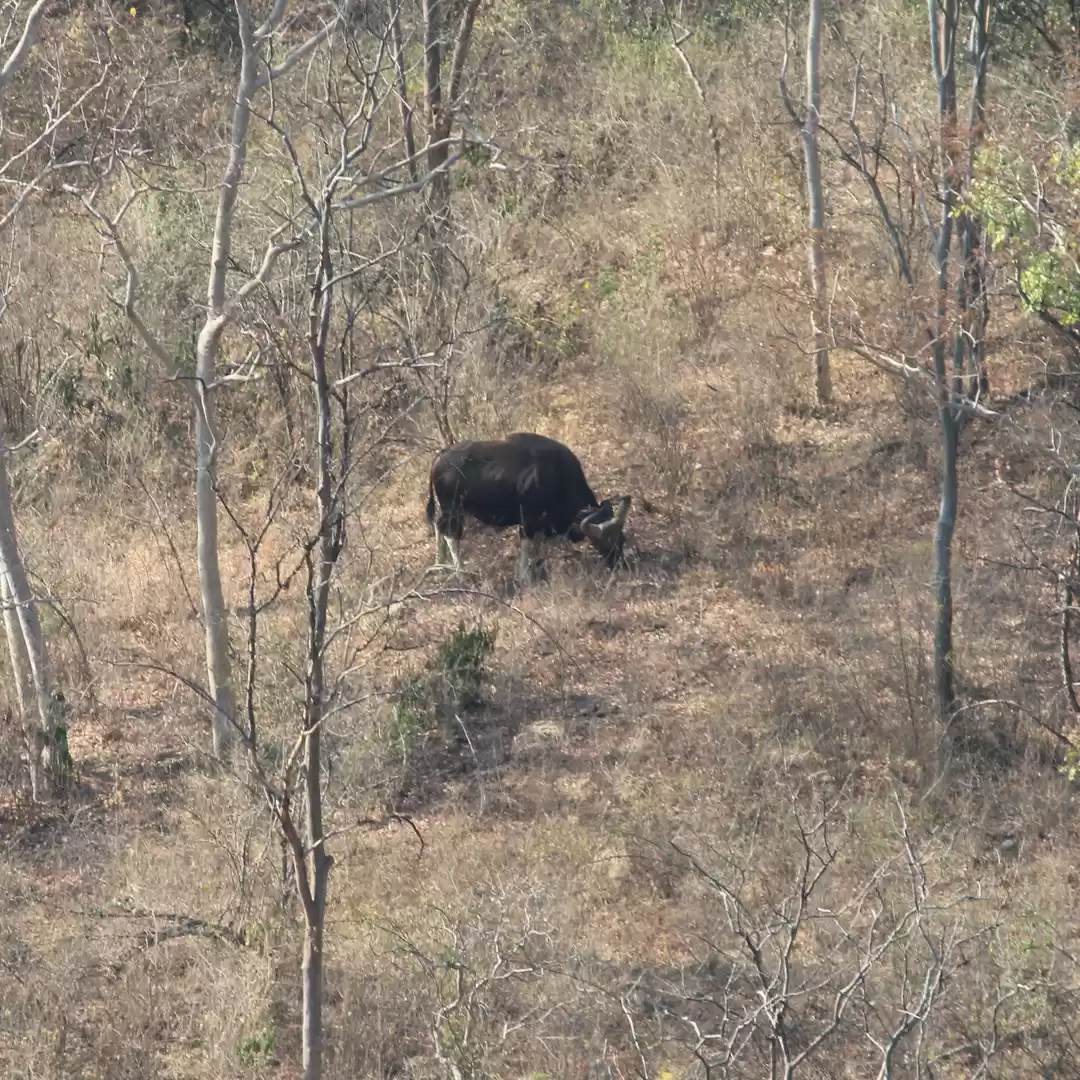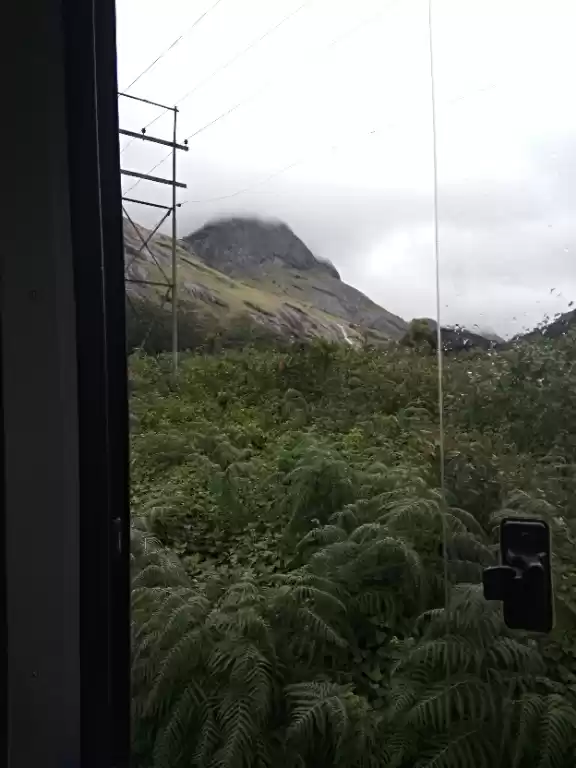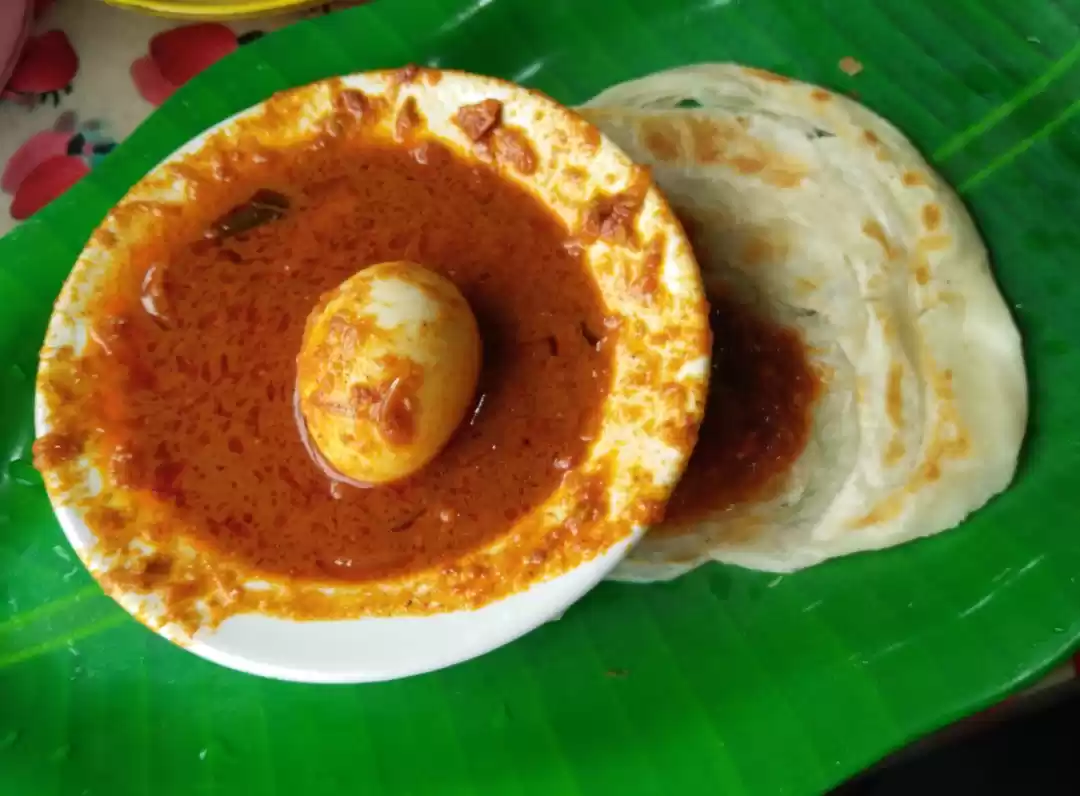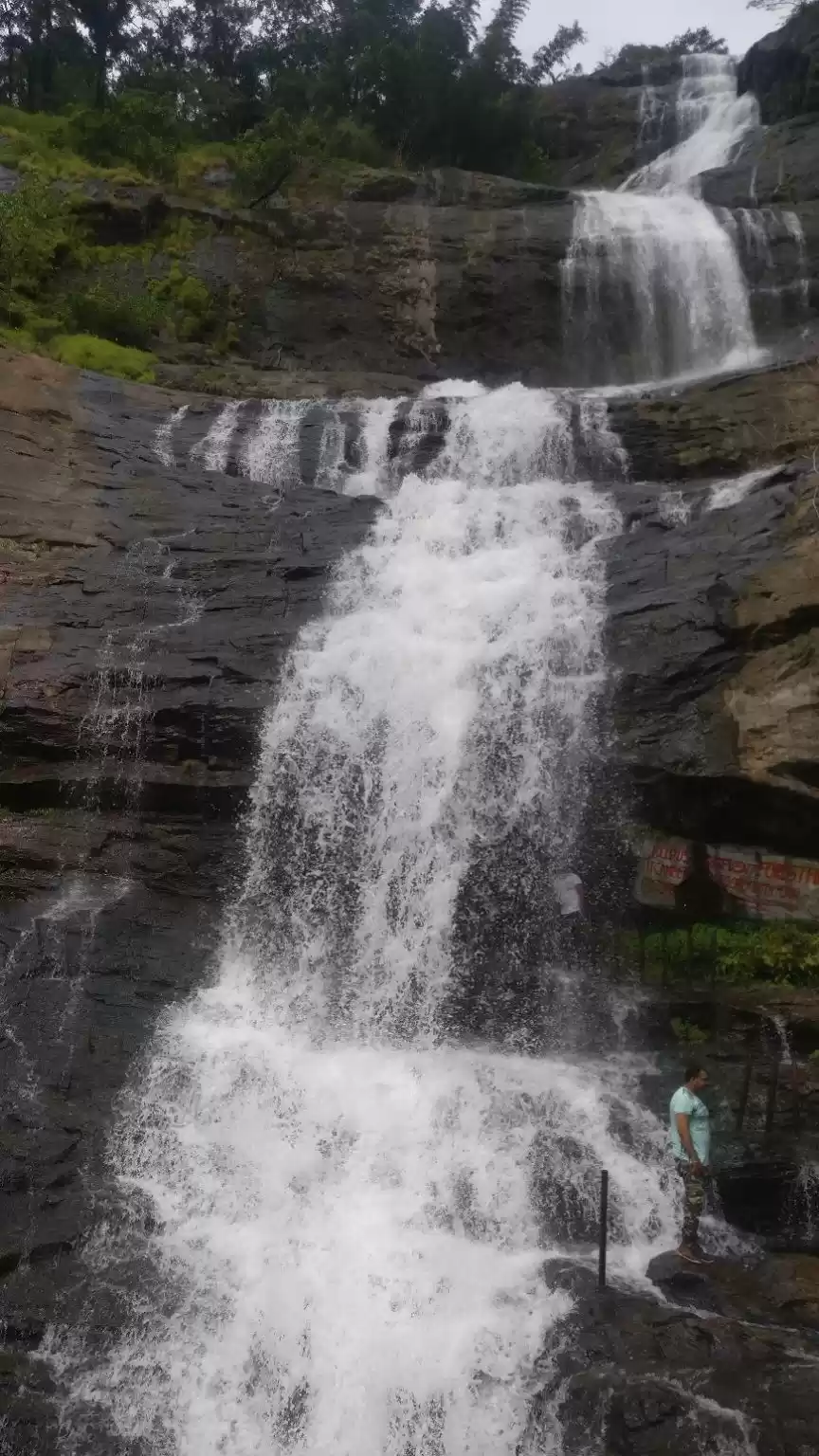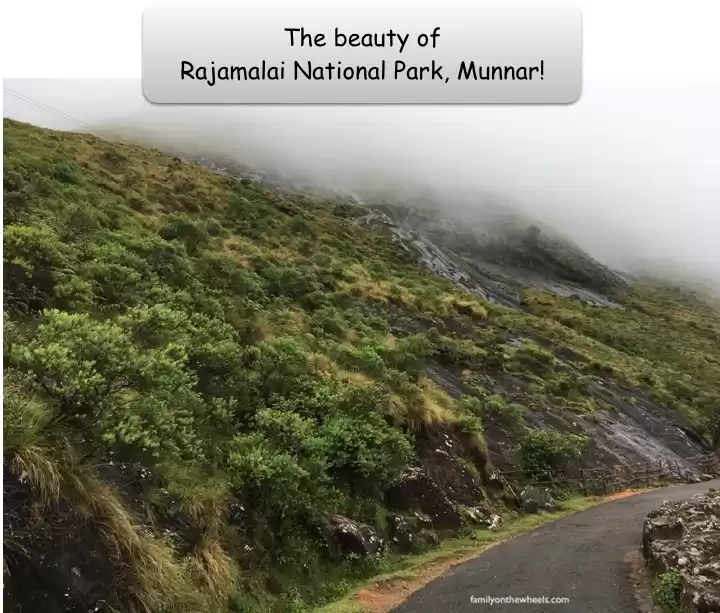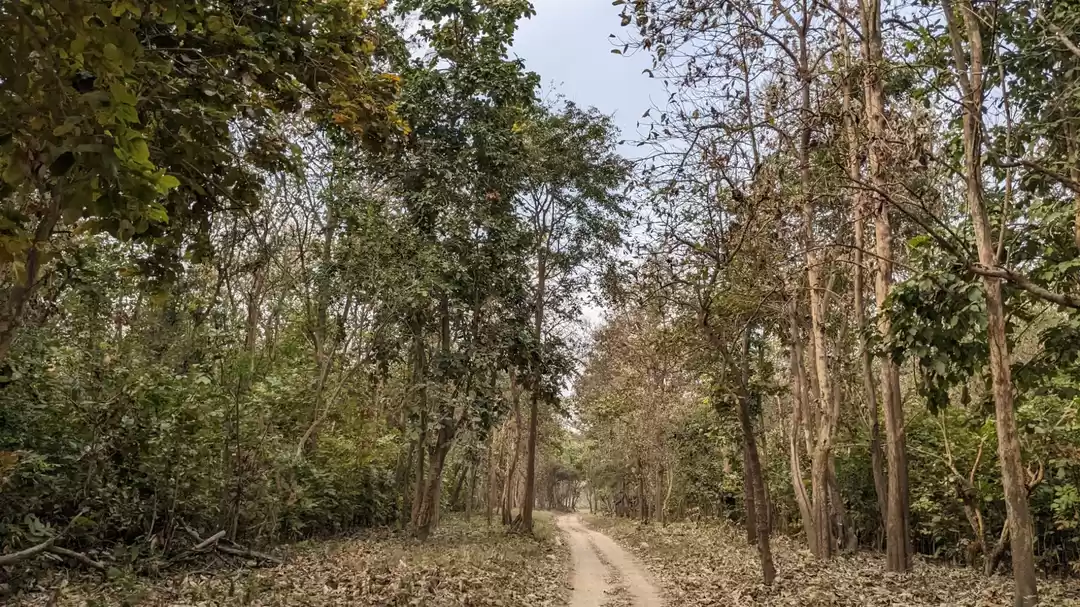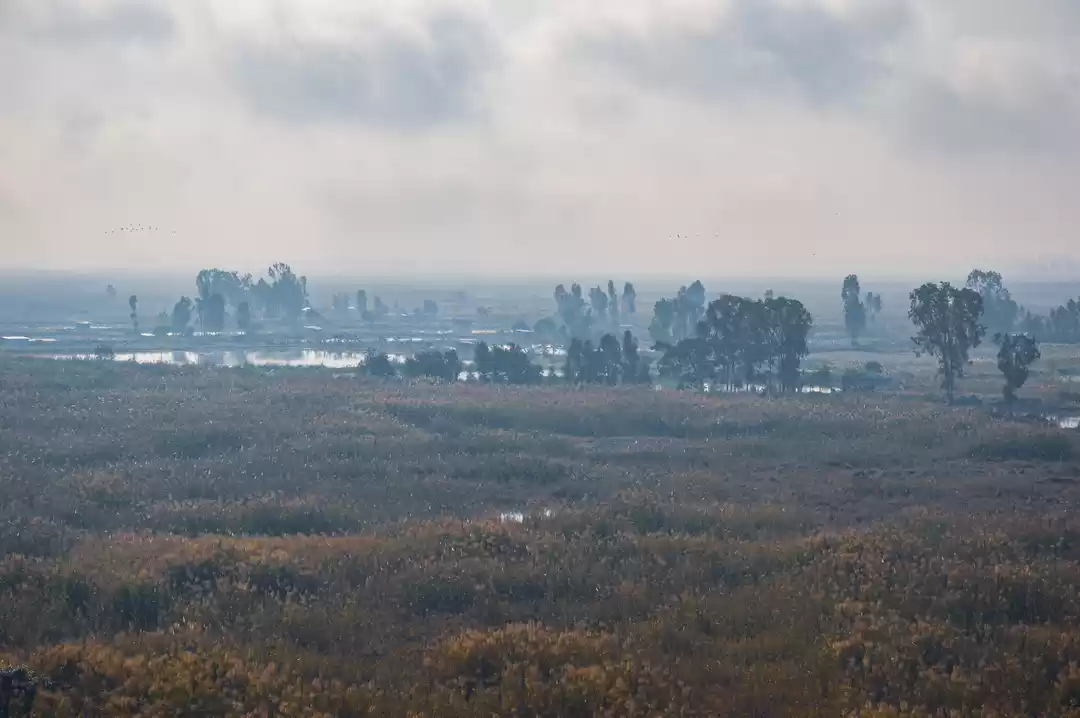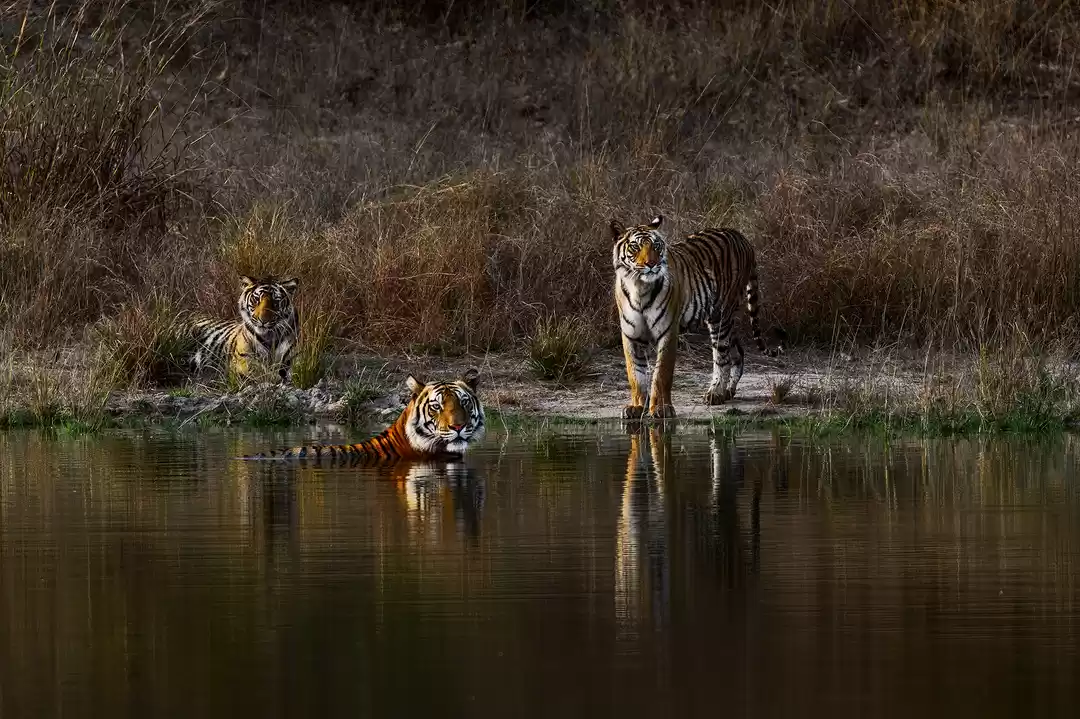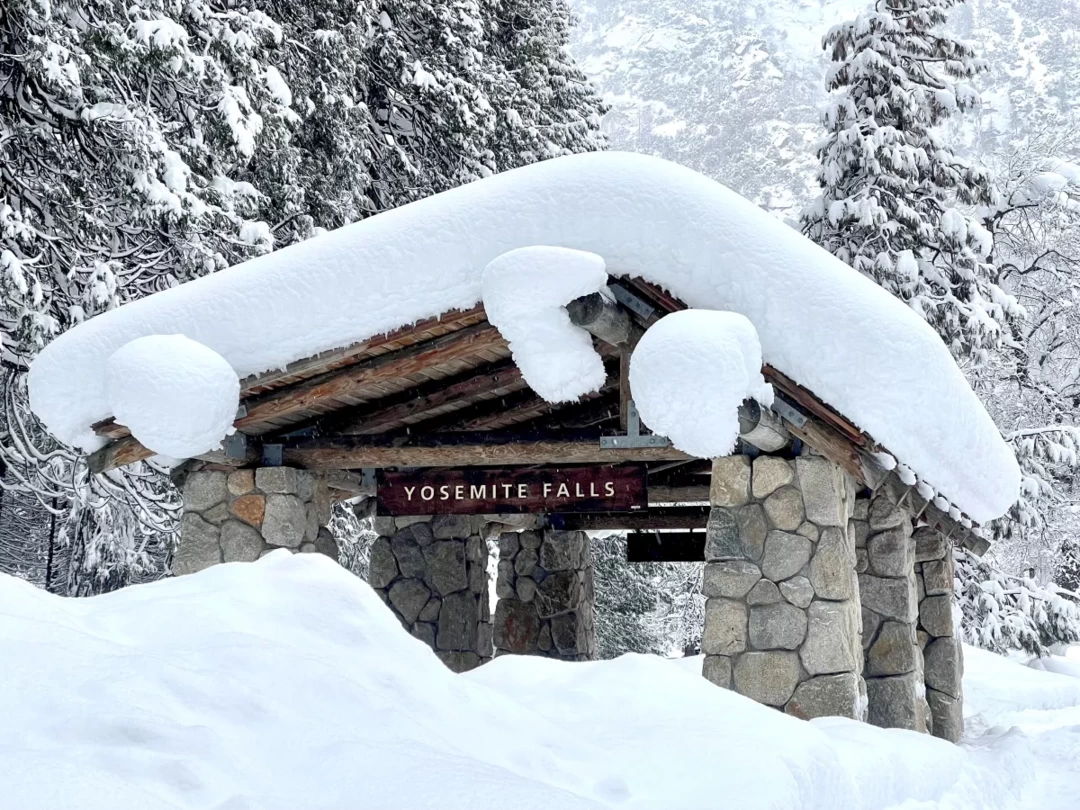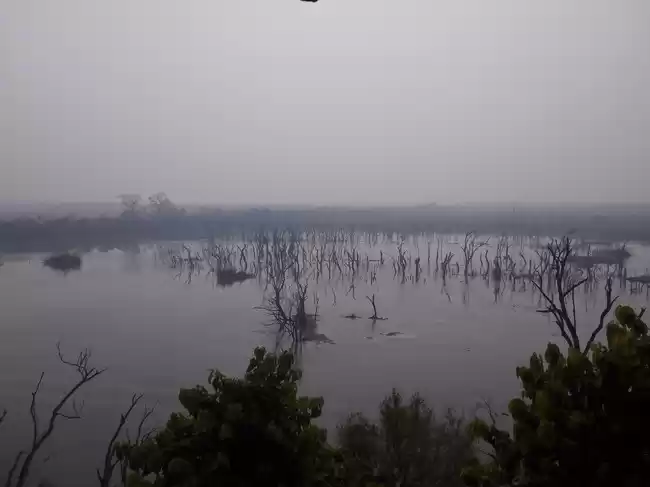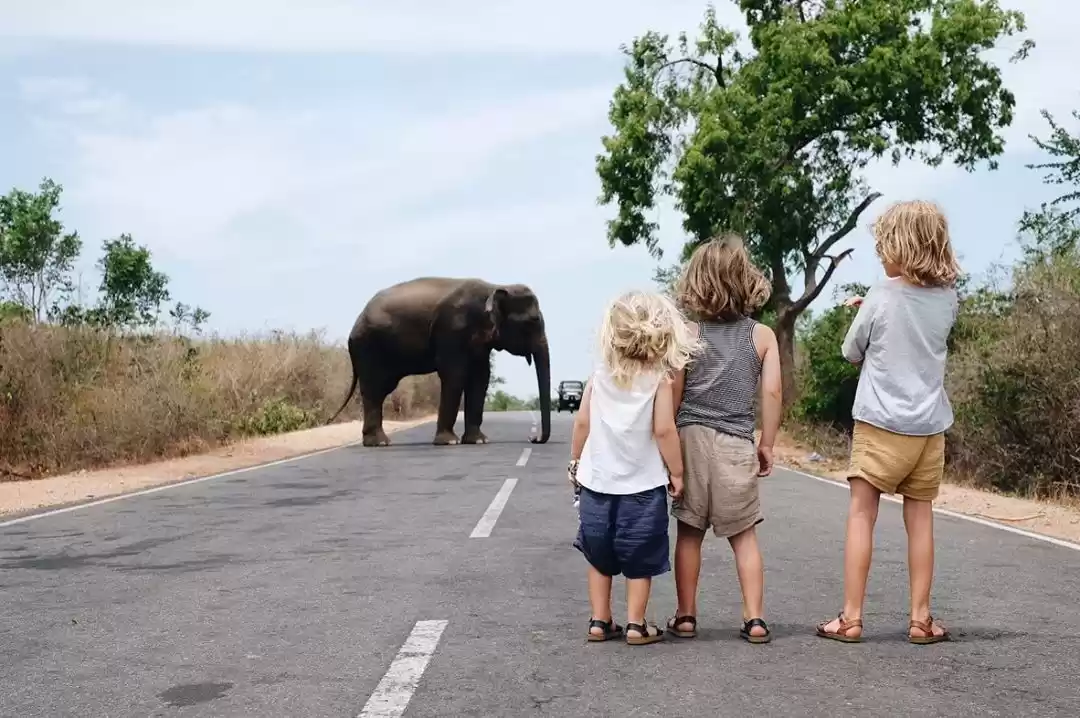Have you ever dreamed of visiting a place where you can witness the rare and majestic Nilgiri Tahr, the endangered wild goat that is endemic to the Western Ghats of India? Or a place where you can see the spectacular Neelakurinji flowers, the blue-purple blossoms that cover the hillsides with a carpet of color once in 12 years? Or a place where you can enjoy the stunning views of the rolling hills and valleys from the highest peak in South India?
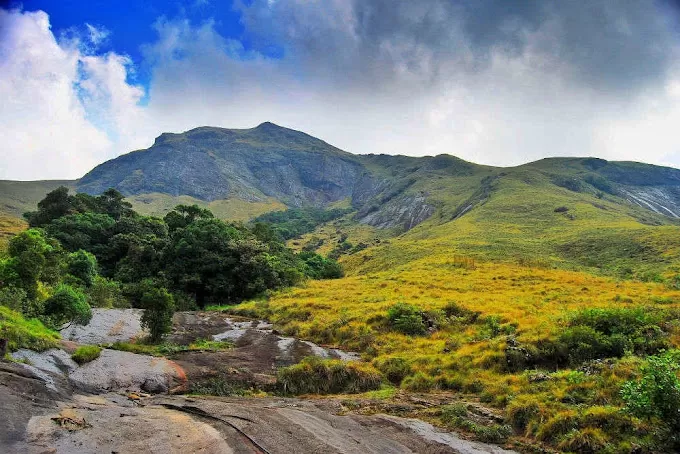
If yes, then Eravikulam National Park is the perfect destination for you. Located in the Western Ghats of Kerala, Eravikulam National Park is one of the most popular and beautiful national parks in India. It was established in 1978 as the first national park in Kerala, and covers an area of 97 sq km. It is home to a rich and diverse biodiversity, including many endangered and endemic species of animals and plants.
In this article, we will tell you everything you need to know about Eravikulam National Park, its location, attractions, wildlife, flora, safari, best time to visit, how to reach, where to stay and nearby tourist attractions. Whether you are a wildlife lover, a nature enthusiast or an adventure seeker, Eravikulam National Park has something for everyone. So read on and discover why Eravikulam National Park is a must-visit destination for your next trip to Kerala.
Wildlife in Eravikulam National Park

Eravikulam National Park is a wildlife lover’s paradise, with its diverse and rich fauna that includes endangered and endemic species. The main attraction of the park is the Nilgiri Tahr, an endangered species of wild goat that is endemic to the Western Ghats. The park has the largest surviving population of Nilgiri Tahr, estimated at 750 individuals. The Nilgiri Tahr is also known as the Varayadu or the mountain goat in Malayalam, the local language of Kerala.
The Nilgiri Tahr has a stocky body with short legs and curved horns. It has a brownish-grey coat with a dark stripe along its back. The males have a silver-grey saddle patch on their backs and a dark mane on their necks. The females are smaller and lighter in color than the males. The Nilgiri Tahr lives in groups called herds, which consist of females and young ones led by an adult male. The males are territorial and fight with each other for dominance and mating rights.
The Nilgiri Tahr is mainly found in the grasslands and shola forests of the park, where it feeds on grasses, herbs and shrubs. It is most active in the morning and evening hours, when it grazes and rests on the slopes. It is shy and elusive by nature, but can be easily spotted in the Rajamala area of the park, where most of the tahrs are concentrated. The best time to see them is from December to April, when they descend to lower altitudes for breeding.
Apart from the Nilgiri Tahr, Eravikulam National Park also hosts many other animals and birds that can be seen in their natural habitat. Some of them are:
Lion-tailed macaque: A rare and endangered primate that has a black coat with a silver mane and a long tail with a tuft at the end. It lives in small groups in the shola forests and feeds on fruits, seeds and insects.
Leopard: A large and powerful cat that has a yellowish-brown coat with black spots and rosettes. It is an agile climber and a stealthy hunter that preys on deer, wild boar, monkeys and other animals.
Tiger: The king of the jungle that has a striped orange-black coat and a muscular body. It is a solitary and territorial animal that hunts by ambush or stalking its prey.
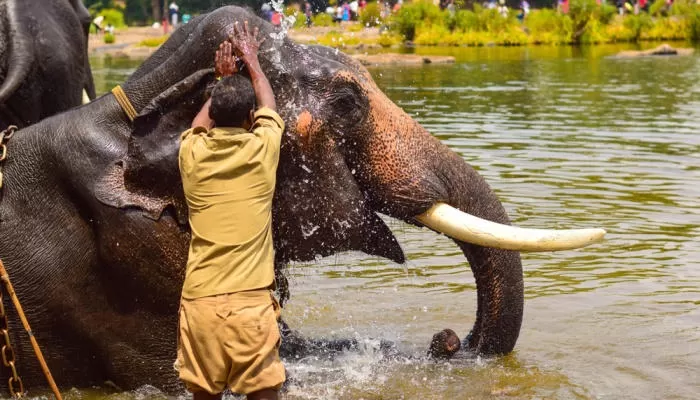
Elephant: The largest land mammal that has a grey skin, a long trunk, tusks and large ears. It lives in herds led by a matriarch and feeds on grasses, leaves, bark and fruits.
Nilgiri langur: A black-furred monkey that has a long tail, a white patch on its forehead and chest and orange eyes. It lives in troops of 10 to 20 individuals and feeds on leaves, fruits and flowers.
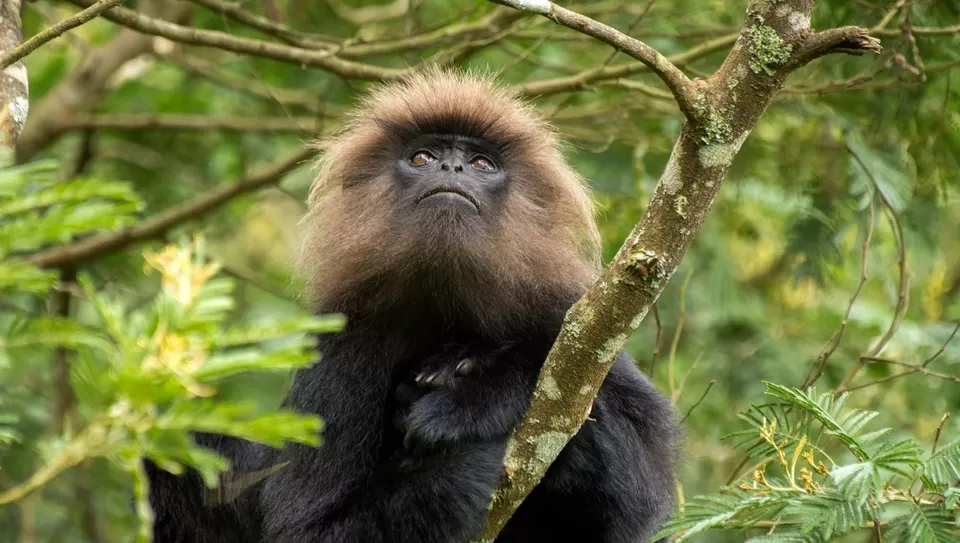
Nilgiri marten: A small and rare carnivore that has a dark brown coat with a yellow throat and chest. It lives in the shola forests and feeds on rodents, birds, reptiles and insects.
Nilgiri wood pigeon: A large and beautiful bird that has a grey head, a purple chest and a white patch on its wings. It lives in the shola forests and feeds on fruits, seeds and buds.
Black-and-orange flycatcher: A small and colorful bird that has a black head and back, an orange throat and belly and a white eye-ring. It lives in the shola forests and feeds on insects, spiders and nectar.
Kerala laughingthrush: A medium-sized bird that has a brownish-grey plumage with a black cap and throat. It lives in flocks of 6 to 10 individuals and feeds on fruits, seeds and insects.
These are just some of the wildlife that you can see in Eravikulam National Park. There are many more species that await your discovery and admiration. So don’t forget to bring your binoculars and cameras when you visit the park.
Flora in Eravikulam National Park
Eravikulam National Park is also a botanical wonderland, with its varied and unique flora that includes rare and endemic species. The main attraction of the park is the Neelakurinji flowers, a type of blue-purple flowers that bloom once in 12 years and cover the hillsides with a carpet of color. The Neelakurinji flowers belong to the genus Strobilanthes, which has about 250 species, most of them found in the Western Ghats.
The Neelakurinji flowers have a bell-shaped corolla with four lobes and a long tube. They grow in clusters on shrubs that reach up to 2 meters in height. They have a sweet fragrance and attract bees, butterflies and birds. The Neelakurinji flowers have a blooming cycle of 12 years, which means they flower only once in their lifetime and then die. The last blooming season was in 2018, which attracted thousands of tourists to the park. The next blooming season is expected in 2030, so mark your calendars.
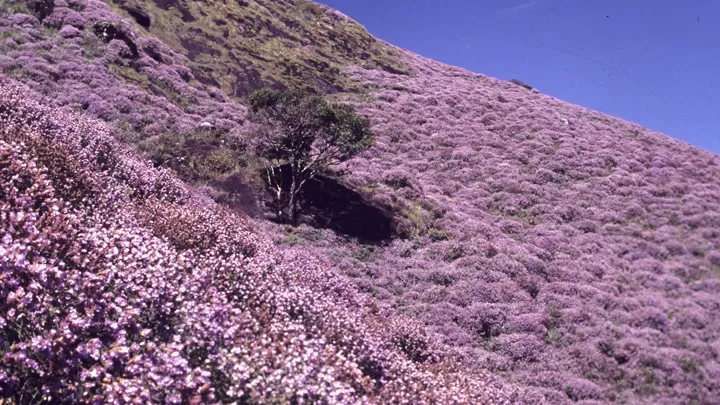
The Neelakurinji flowers have a special significance and cultural value for the local people of Kerala. They are considered as a symbol of love, romance and prosperity. They are also used as an indicator of time, as they mark the passage of 12 years. The local name Neelakurinji comes from the words neela, which means blue, and kurinji, which is the name of a mythical flower mentioned in ancient Tamil literature.
Apart from the Neelakurinji flowers, Eravikulam National Park also boasts of many other plants and flowers that grow in different habitats and elevations. Some of them are:
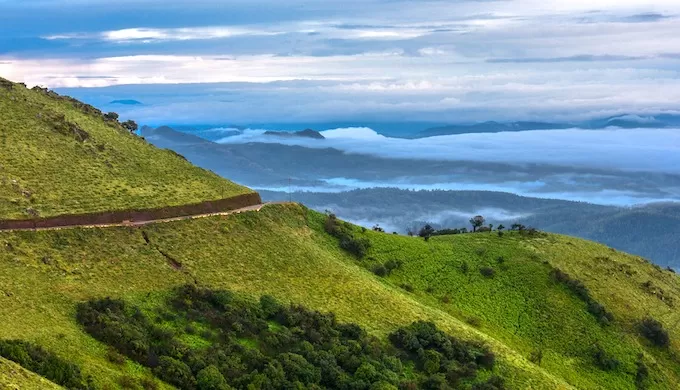
Shola forests: These are patches of evergreen forests that are found in the valleys and gorges of the park. They have a dense canopy of trees such as rhododendrons, magnolias, laurels, etc., that provide shade and moisture for the understory plants such as ferns, orchids, mosses, etc.
Grasslands: These are open areas of rolling hills that are covered with grasses such as Chrysopogon zeylanicus, Arundinella mesophylla, etc., that provide food for the herbivores such as Nilgiri Tahr, gaur, sambar deer, etc.
Orchids: These are exotic and colorful flowers that belong to the family Orchidaceae, which has about 1,300 species in India, out of which 111 are found in Kerala. Some of the orchids found in the park are Aerides crispa, Bulbophyllum neilgherrense, Coelogyne mossiae, etc.
Balsams: These are delicate and fragrant flowers that belong to the family Balsaminaceae, which has about 850 species in India, out of which 300 are found in Kerala. Some of the balsams found in the park are Impatiens glandulifera, Impatiens leschenaultii, Impatiens pulcherrima, etc.
These are just some of the flora that you can see in Eravikulam National Park. There are many more species that await your discovery and admiration. So don’t forget to bring your guidebooks and cameras when you visit the park.
You may also like to read: 6 Stunning National Parks in Kerala: Everything You Need To Know About God's Own Wilderness
Safari in Eravikulam National Park
One of the best ways to explore Eravikulam National Park is by taking a safari tour by bus or jeep. A safari tour will take you to different parts of the park where you can see the wildlife and flora in their natural habitat. A safari tour will also give you a chance to learn more about the park from the guides and rangers who accompany you.
There are two types of safari tours available in Eravikulam National Park: bus safari and jeep safari. Here are some details about each option:
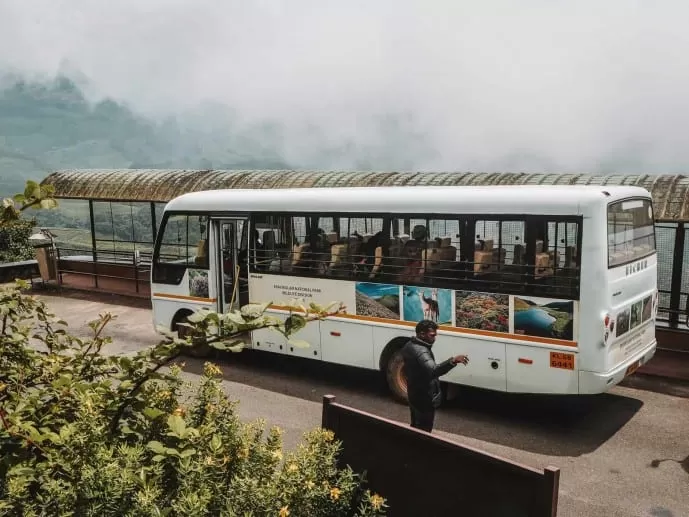
Bus safari: This is the most common and affordable way to visit the park. You can board a bus from the ticket counter at the entrance of the park and enjoy a 30-minute ride to the Rajamala area, where most of the Nilgiri Tahrs are found. You can then get down from the bus and walk around the area for about an hour, observing the tahrs and other animals and birds. You can also visit the Eravikulam Interpretation Centre, where you can learn more about the park’s history, ecology and conservation.
The bus safari operates from 8:00 am to 2:00 pm every day, except during the closure period of February to March. The entry fee for the bus safari is Rs. 200 for Indian adults, Rs. 500 for foreign nationals, Rs. 50 for ordinary camera and Rs. 350 for video camera.
Jeep safari: This is a more adventurous and exclusive way to visit the park. You can book a jeep from the private operators outside the park and enjoy a 2-hour ride to different parts of the park, such as Anamudi peak, Lakkom waterfalls, etc. You can also stop at various spots to take photos and admire the scenery. The jeep safari operates from 6:00 am to 6:00 pm every day, except during the closure period of February to March. The cost of the jeep safari varies depending on the operator, route and number of passengers, but it usually ranges from Rs. 1,500 to Rs. 3,000 per jeep.
Whichever option you choose, there are some dos and don’ts that you need to follow while visiting Eravikulam National Park by safari:
1. Do not litter the park; leave your footprints only.
2. Do not carry any food or beverage items into the park; they are prohibited.
3. Do not smoke, consume alcohol or any other contraband inside the park; they are prohibited.
4. Do not feed, tease or disturb any wild animal or bird; they are protected by law.
5. Do not keep any pet animal, firearm, trap, poisonous or any other substance that is injurious to wildlife; they are prohibited.
6. Do not go beyond the designated areas or trails; they are for your safety and conservation.
7. Do not play music, honk or speak loudly; silence can help you hear wildlife better.
7. Do not carry any plastic materials inside the park; the park is a plastic-free zone.
8. Following these rules will ensure that you have a safe and enjoyable safari experience in Eravikulam National Park.
Best Time to Visit Eravikulam National Park
Eravikulam National Park is open throughout the year, except during the closure period of February to March, when it is closed for the calving season of the Nilgiri Tahr. However, depending on your preferences and interests, you may want to visit the park during a specific season or month. Here are some factors that may influence your decision:

Weather:
The weather in Eravikulam National Park is pleasant and moderate throughout the year, with an average temperature ranging from 15°C to 25°C. However, there may be variations depending on the elevation and season. The summer season lasts from March to May, when it is warm and sunny, with occasional showers. The monsoon season lasts from June to September, when it is wet and humid, with heavy rainfall. The winter season lasts from October to February, when it is cool and dry, with clear skies.
Wildlife activity:
The wildlife activity in Eravikulam National Park varies depending on the season and weather conditions. The summer season is a good time to see the Nilgiri Tahr, as they descend to lower altitudes for breeding and feeding. The monsoon season is a good time to see other animals and birds, as they become more active and visible due to the abundance of water and food sources. The winter season is a good time to see both Nilgiri Tahr and other wildlife, as they enjoy the cool climate and fresh vegetation.
Flowering season:
The flowering season in Eravikulam National Park is one of the most spectacular phenomena that attracts thousands of tourists every year. The flowering season occurs once in 12 years, when the Neelakurinji flowers bloom in full glory and cover the hillsides with a carpet of blue-purple color. The last flowering season was in 2018, which was witnessed by many visitors who were awestruck by the beauty and rarity of the event. The next flowering season is expected in 2030, which is something that you don’t want to miss.
Based on these factors, the best time to visit Eravikulam National Park is from December to April, when you can see the Nilgiri Tahr, other wildlife and flora in their best condition, and enjoy the pleasant weather and clear views. However, if you want to see the Neelakurinji flowers, you will have to wait for 2030, when they will bloom again.
How to Reach Eravikulam National Park
Eravikulam National Park is located in the Western Ghats of Kerala, about 13 km from Munnar town, which is the nearest town to the park. Munnar is well connected by roads from Kerala and Tamil Nadu and can be reached by various modes of transport. Here are some details about how to reach Eravikulam National Park from different cities:
By air: The nearest airports to Eravikulam National Park are Kochi (Kerala) and Coimbatore (Tamil Nadu), which are located at about 148 km and 175 km respectively. From these airports, you can take a taxi or a bus to Munnar, and then another taxi or bus to the park. The taxi fare may vary depending on the operator and route, but it usually ranges from Rs. 3,000 to Rs. 5,000 per trip. The bus fare may vary depending on the type and frequency of the bus, but it usually ranges from Rs. 100 to Rs. 300 per person.
By train: The nearest railway stations to Eravikulam National Park are Aluva (Kerala) and Coimbatore (Tamil Nadu), which are located at about 120 km and 160 km respectively. From these railway stations, you can take a taxi or a bus to Munnar, and then another taxi or bus to the park. The taxi fare may vary depending on the operator and route, but it usually ranges from Rs. 2,500 to Rs. 4,000 per trip. The bus fare may vary depending on the type and frequency of the bus, but it usually ranges from Rs. 100 to Rs. 300 per person.
By road: The most convenient and scenic way to reach Eravikulam National Park is by road, as you can enjoy the views of the hills, valleys, waterfalls and tea gardens along the way. You can drive your own vehicle or hire a taxi or a cab from any city in Kerala or Tamil Nadu. The road route from Kochi to Munnar is via Aluva, Perumbavoor, Kothamangalam, Adimali and Pallivasal, which covers a distance of about 130 km. The road route from Coimbatore to Munnar is via Pollachi, Udumalpet, Marayoor and Pallivasal, which covers a distance of about 160 km.
Whichever mode of transport you choose, make sure that you book in advance, check the availability and timings of the buses or jeeps, and plan your travel accordingly.
Where to Stay Near Eravikulam National Park
If you want to spend more time in Eravikulam National Park and explore its beauty and diversity at your own pace, you may want to stay near the park for a night or two. There are many accommodation options near Eravikulam National Park that suit different budgets and preferences. Here are some of them:
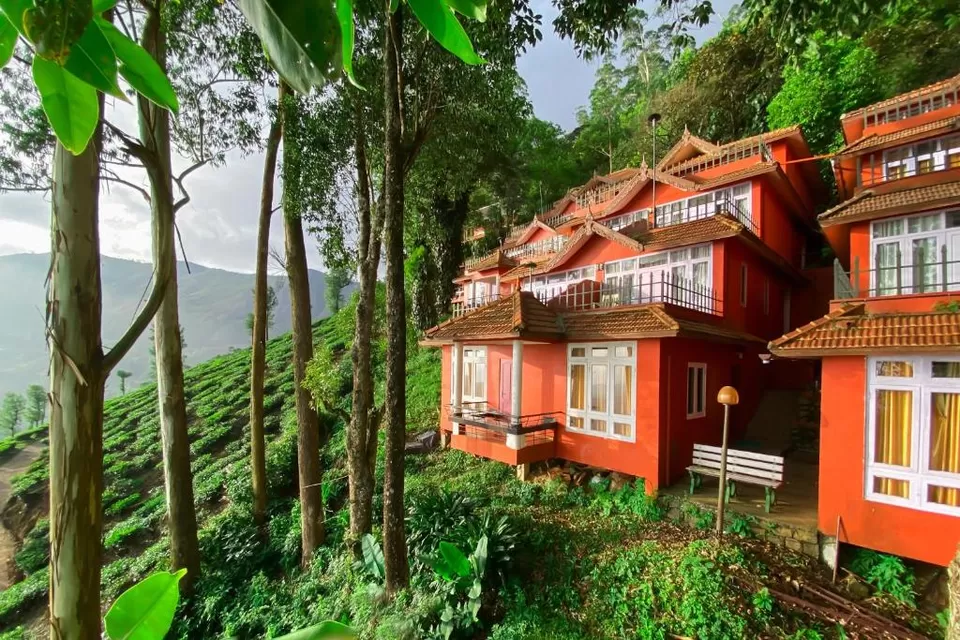
Hotel & Resorts:
There are many hotels & resorts near Eravikulam National Park that offer spacious cottages or villas with modern amenities as well as additional features such as swimming pool, spa, gym, etc. Some of the resorts near the park are:
Tea Valley Resort: A budget resort that is located at about 8 km from the park. It has tastefully designed rooms for guests, a restaurant, a garden, and many more amenities to make your trip better.
Hotel Hillview Munnar: A budget hotel that is located at about 10 km from the park. It has a restaurant, a garden and a terrace that offer panoramic views of the hills.
Abad Copper Castle Resort: A mid-range resort that is located at about 12 km from the park. It has a restaurant, a spa and a games room that offer various facilities for relaxation and entertainment. - Fragrant Nature Munnar: A luxury hotel that is located at about 15 km from the park. It has a restaurant, a bar and a fitness center that offer high-quality services and amenities.
The Tall Trees Munnar: A mid-range resort that is located at about 10 km from the park. It has a restaurant, a spa and a library that offer a luxurious and elegant ambiance. - The Wind Munnar: A luxury resort that is located at about 12 km from the park. It has a restaurant, a bar and a rooftop lounge that offer a stunning and romantic view of the hills.
Homestays:
There are many homestays near Eravikulam National Park that offer homely rooms with basic amenities such as TV, Wi-Fi, etc., as well as local hospitality and cuisine. Some of the homestays near the park are:
Green Magic Home: A budget homestay that is located at about 7 km from the park. It has a kitchen, a dining area and a balcony that offer a warm and friendly environment.
Mistletoe Munnar: A mid-range homestay that is located at about 9 km from the park. It has a kitchen, a dining area and a terrace that offer a spacious and comfortable setting.
Rose Gardens Munnar: A luxury homestay that is located at about 11 km from the park. It has a kitchen, a dining area and a garden that offer a beautiful and relaxing atmosphere.
Whichever option you choose, make sure that you book in advance, check the availability, and plan your stay accordingly.
You may also like to read: Of Thrilling Traipsing with Nilgiri Tahrs: Eravikulam National Park
Nearby Tourist Attractions from Eravikulam National Park
If you have some extra time and want to explore more of the beauty and culture of Kerala, you can visit some other places of interest near Eravikulam National Park. Here are some of them:
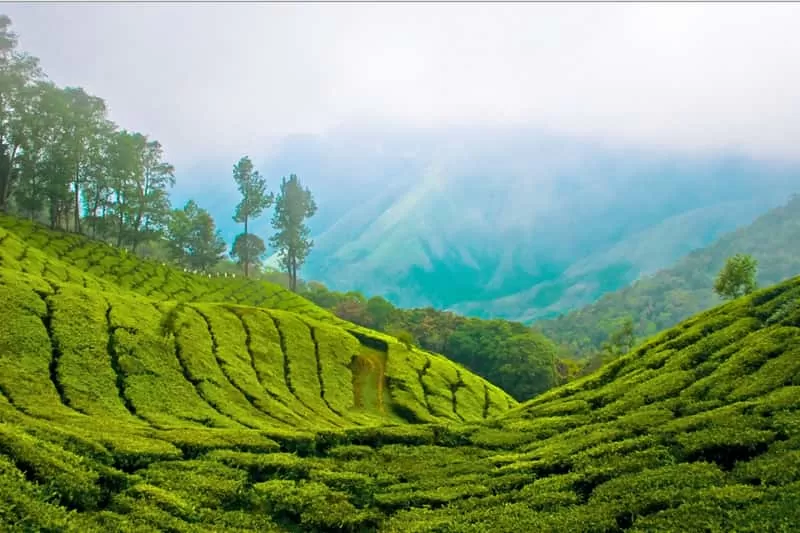
Munnar:
Munnar is the nearest town to Eravikulam National Park, and a popular hill station in Kerala. It is famous for its tea gardens, waterfalls, lakes and viewpoints. You can visit the Tea Museum, the Mattupetty Dam, the Echo Point, the Top Station and the Kundala Lake in Munnar. You can also enjoy activities such as boating, trekking, cycling and paragliding in Munnar.

Marayoor:
Marayoor is a small town that is located at about 40 km from Eravikulam National Park. It is known for its sandalwood forests, ancient rock paintings, dolmens and waterfalls. You can visit the Sandalwood Factory, the Rajiv Gandhi Children's Park, the Thoovanam Waterfalls and the Chinnar Wildlife Sanctuary in Marayoor. You can also enjoy activities such as camping, hiking, birdwatching and wildlife spotting in Marayoor.
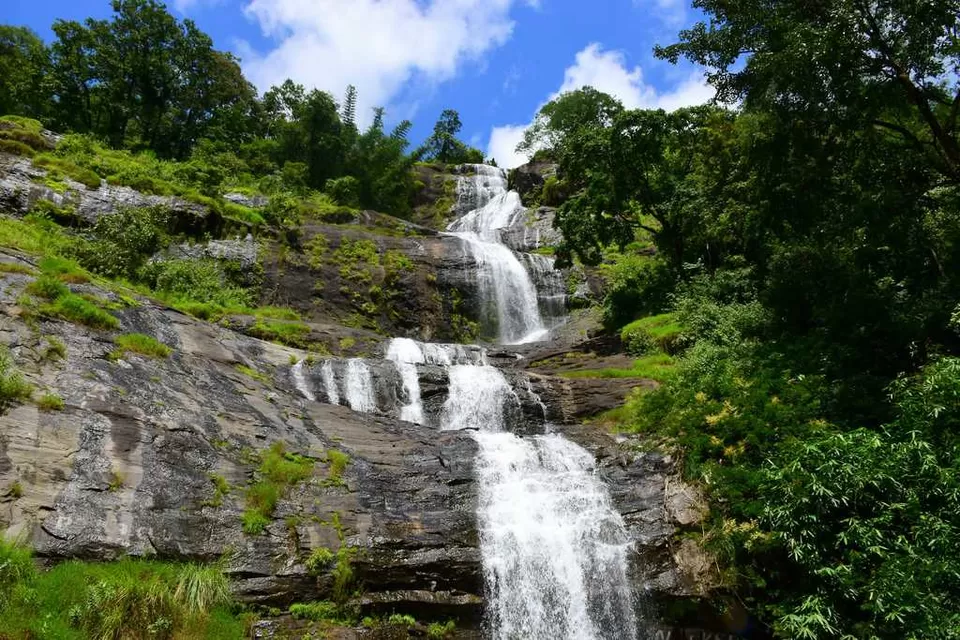
Devikulam:
Devikulam is a scenic village that is located at about 15 km from Eravikulam National Park. It is known for its green hills, tea plantations, streams and lakes. You can visit the Sita Devi Lake, the Pallivasal Falls, the Power House Falls and the Lockhart Gap in Devikulam. You can also enjoy activities such as fishing, boating, picnicking and photography in Devikulam.
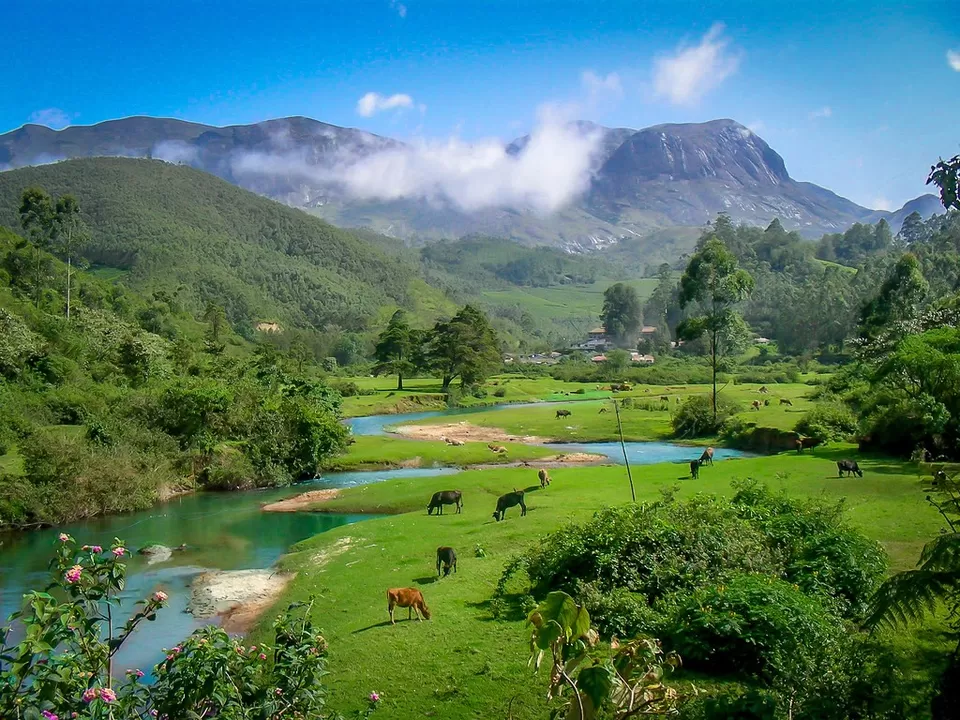
Anamudi:
Anamudi is the highest peak in South India, and a part of Eravikulam National Park. It is located at about 10 km from the park entrance, and offers a panoramic view of the surrounding landscape. You can visit the Anamudi View Point, which is accessible by jeep or trekking. You can also enjoy activities such as climbing, camping and birdwatching on Anamudi.
These are just some of the places that you can visit near Eravikulam National Park. Whichever place you choose to visit, make sure that you respect the nature and culture of the place, and have a fun and memorable time.
Eravikulam National Park is a must-visit destination for anyone who loves nature and wildlife. It is a place where you can see the rare and majestic Nilgiri Tahr, the spectacular Neelakurinji flowers, and many other animals and plants that are unique to the Western Ghats.
It is also a place where you can enjoy the stunning views of the rolling hills and valleys from the highest peak in South India. It is a place where you can experience the beauty and diversity of Kerala’s wildlife paradise.
So what are you waiting for? Book your trip to Eravikulam National Park today and discover why it is one of the most popular and beautiful national parks in India.



























